Animals
As toxic wildfire smoke chokes West Coast, bird populations have gone missing
Bird lovers in California are realizing that many birds are simply disappearing or worse, turning up dead.

As the West Coast faces an unprecedented wave of fires across multiple states, bird lovers in California are realizing that many birds are simply disappearing or worse, turning up dead.
In the Birding California group on Facebook, bird watchers discussed the total silence that has come to their backyards, where the sounds of birds chirping and singing used to greet them in the morning.
“I live in Folsom—have not seen a bird or heard a bird chirp this morning,” said Jodi Root.
“We live in northern Nevada and have noticed the same thing,” added Gardnerville resident Karen Holden.
“Same here in Napa,” said Tammy Saunders, who said that things had become “very quiet which just adds to the eeriness of the orange colored dark sky.”
Almost 100 seasoned birdwatchers gave similar responses to the survey, with most noting that they saw a marked decline in birds visiting their feeders and birdbaths, as well as a clear thinning-out of the variety of species.
Like the insects that many birds rely on for food, wild bird populations have been in a state of major decline over recent years. However, the record-shattering heatwave and smokey, toxic air conditions in California and other western states haven’t only impacted human populations. Tragically, the ash that is falling across West Coast cities isn’t only comprised of trees and brush, but also includes the incinerated remains of birds and other creatures caught in the wildfires.
And as Deborah Pertersen of Inside Climate News reports, birds – with their highly sensitive respiratory systems that are instantly responsive to changes in environmental conditions – are acting as the global equivalent to the canary in a coal mine, at a time when seemingly the entire planet is on fire.
While much still remains unknown about how smoke impacts bird populations, doctoral candidate Andrew Stillman of the University of Connecticut notes that birds perpetually live on the edge, and extreme changes can have dire consequences for bird species.
“One thing that is important to point out is we do know high levels of smoke exposure can be harmful to birds,” Stillman told Inside Climate News. And unlike humans, birds “cannot escape like humans by going indoors.”
Veterinarians and bird scientists have also found that smoke can leave a damaging impact on the lung tissue of captive birds, leaving them susceptible to deadly respiratory infections, notes the Audubon Society.
“We do know that exposure to particulate matter, which of course is of great concern for human health, can affect birds as well,” said Olivia Sanderfoot, a National Science Foundation Graduate Research Fellow at the University of Washington Seattle who studies the impact of air pollution on birds.
And while the still-raging fires haven’t given researchers much of a chance to survey the population of birds along the west coast, the anecdotal evidence stacking up is clearly showing that the health effects of the massive plumes of smoke coming from over 85 fires raging in western states is hitting bird populations hard.
“Overall, it seems like the anecdotes suggest that there is a decline in bird activity during smoke events,” said Olivia Sanderfoot, a researcher at the University of Washington.
In a 2017 paper, Sanderfoot and Tracey Holloway wrote that “Birds have long been recognized as sentinel species for environmental change.”
The literature review concluded that “Exposure to air pollution clearly causes respiratory distress in birds and increases their susceptibility to respiratory infection,” in addition to causing complications to bird reproduction.
However, the science of wildfire smoke’s impact on birds remains largely undeveloped.
“We know pretty much nothing about the long-term impact of smoke on birds,” Sanderfoot said.
Indeed, most of the research on birds only covers a handful of species, and most of it focuses on air pollution rather than wildfire smoke.
“Of the roughly 10 000 species of birds known worldwide, only a few have been studied to characterize avian responses to air pollution, and the animals used in laboratory experiments may not be representative of the wild bird species most at risk from air pollution,” Sanderfoot and Holloway wrote.
Sanderfoot and her fellow researchers are now conducting studies in Washington, a state which saw some of the most hazardous air pollution ever recorded over the past week. Sanderfoot and her team are planting microphones and cameras in smokey areas to register whether bird songs decrease in high-smoke areas.
Tara Sears Lee, a nursery volunteer in Los Alto, California, has also observed the terrible impact of smoke on birds in recent days.
“Outside for 6 hours yesterday and no jays, crows, ravens, quail, turkeys, or hawks – all usual and very vocal visitors,” she wrote on Facebook. “Only hummingbirds, juncos, towhees and titmice. Worst of all was a dead hummingbird just lying on the ground – had heard they are being overcome by heat and smoke and just drop dead.”
Birders across the state are also posting photos on their Facebook accounts of dead hummingbirds in their backyards or, inversely, boosted numbers of birds at their backyard feeders – a result of the forced migration caused by fires.
“I think all the birds came to my house south of San Jose. Sometimes there will be more than 40-50 out there,” wrote Charlotte Trethway Noriega on Facebook.
As Petersen explains in her article, bird populations in North America have plummeted by 29 percent – or three billion birds – since 1970. And according to a 2019 study, rampant high temperatures resulting from climate change are likely to drastically alter the migration patterns of bird species. With pastures and grasslands being converted to crops, nesting places have dwindled along with the mass die-offs of insects eliminated by pesticides.
However, Stillman is finding some small traces of hope in his research of birds that have thrived in areas hit by wildfires. Black-backed woodpeckers are quickly returning to burned-out areas to feed on the larvae of wood-boring beetles that thrive on dying trees burned in fires.
However, Stillman notes “a very big caveat”: the new generation of “mega fires” like the one the West Coast is currently undergoing is far more destructive than those of the past, and the question of “how are the birds responding to this new normal” remains open.
Animals
The Death Of A Pet Should Be Taken More Seriously By Counselors

Pets hold a special place in our lives, often becoming as cherished as any family member. Yet, when we face the heartbreak of losing these beloved companions, the depth of our grief is frequently underestimated and misunderstood, not only by those around us but also by some professionals who guide us through our darkest times. Why is the death of a pet often not taken as seriously as the loss of a human? This article explores the critical role that counselors can play in recognizing and addressing the profound psychological impact of pet loss, urging a reevaluation of how this grief is handled in therapeutic settings.
The Psychological Impact of Pet Loss
The grief experienced after the loss of a pet is profound and often mirrors the emotional intensity associated with losing a human loved one. This grief is characterized by deep sadness, loneliness, and sometimes even depression. Researchers emphasize the importance of recognizing the strength of the human-animal bond, which can significantly impact an individual’s mental and emotional well-being. The bond with a pet is not merely emotional but also psychologically stabilizing, providing companionship, unconditional love, and a sense of purpose.
When a pet passes away, the owner may experience a range of intense emotions that can affect their psychological health. This type of grief, often referred to as disenfranchised grief, lacks societal recognition and validation, leaving individuals to cope with their loss in isolation. This lack of acknowledgment can complicate the grieving process, making it harder for pet owners to seek and receive support. Studies have shown that pet owners often turn to their pets for emotional support more frequently than to family or friends, highlighting the significant role pets play in their lives.
In therapy, recognizing the validity of grief associated with pet loss is crucial. Counselors and therapists are encouraged to treat pet bereavement with the same seriousness as the loss of a human. This approach not only validates the client’s feelings but also opens pathways for healing and recovery. Therapeutic interventions might include talking through the loss, creating memorials, or expressing feelings through art, which helps in acknowledging and processing the grief.
Moreover, societal attitudes towards pet loss are slowly evolving, with increasing recognition of the deep emotional bonds formed between humans and animals. This shift highlights the need for mental health professionals to develop strategies and interventions specifically tailored to help individuals cope with pet loss effectively.
Role of Counselors in Pet Bereavement

Counselors play a crucial role in supporting individuals through the grieving process of losing a pet, a role that requires sensitivity and recognition of the deep emotional impact involved. The grief experienced from pet loss can be as intense and profound as the loss of a human, which necessitates a specialized approach in counseling practice.
Understanding and Validating Grief
Counselors are tasked with understanding the unique bond between pets and their owners and recognizing that the loss can lead to significant emotional distress. It is essential for mental health professionals to validate these feelings rather than minimize them. Validation helps individuals feel understood and supported, which is a critical component in the healing process.
Therapeutic Interventions
Effective counseling for pet bereavement might include creating a space where individuals can express their grief without judgment. This could involve discussing the pet’s role in their life, memories, and the feelings of emptiness that might follow the pet’s death. Therapists can use various interventions such as grief counseling techniques tailored specifically for pet loss, which may not be covered extensively in traditional grief counseling settings.
Education and Awareness
There is also a need for increased awareness and education among counselors regarding the significance of pet loss. Training programs and continuing education courses should include modules that focus on the psychological effects of losing a pet and strategies for providing effective support.
Supportive Practices
Incorporating the recognition of pet loss into therapeutic practices can significantly aid in normalizing these feelings and fostering a better coping environment. Counselors can guide clients in finding or forming support groups specifically for pet bereavement, which can provide additional communal support and decrease feelings of isolation.
Strategies for Counseling Pet Loss
Effective counseling strategies for pet loss involve recognizing the unique grief that comes with the death of a pet and providing support that acknowledges this significant emotional loss. Here are some tailored approaches that counselors can use to support grieving pet owners:
1. Validation of Grief
Counselors should begin by validating the client’s grief, affirming that their feelings of loss are both real and significant. Acknowledging the depth of the bond between the client and their pet helps to legitimize the grief process and can facilitate healing.
2. Educational Support
Providing educational materials that discuss pet loss and its impact can be incredibly helpful. Counselors can offer resources that explain the stages of grief specific to pet loss, which helps normalize the feelings that pet owners experience.
3. Therapeutic Techniques
Specific therapeutic techniques can be effective, including:
- Memory Boxes: Creating a physical box filled with mementos of the pet, such as collars, toys, and photos, can help clients process their grief by celebrating the life of their pet.
- Writing Letters: Encouraging clients to write letters to their deceased pets can facilitate expressing unresolved feelings and foster a sense of closure.
- Narrative Therapy: This involves helping clients tell their story of the pet’s life and death, which can aid in contextualizing the loss and its impact on their life.
4. Group Therapy
Group therapy sessions with other individuals who have experienced pet loss can provide a support network that helps diminish feelings of isolation. Sharing experiences with others who understand the unique nature of pet loss can be incredibly validating and healing.
5. Incorporate Rituals
Supporting clients in creating rituals to honor their pet’s memory can be therapeutic. Whether it’s a small ceremony, planting a tree, or creating an online memorial, these acts can help in the grieving process.
6. Support for Decision-Making
Counselors can also play a crucial role in helping pet owners make difficult decisions towards the end of a pet’s life, such as euthanasia. Providing a space to discuss these choices and the emotions surrounding them can be crucial.

Challenges in the Current Counseling Approach
The current approach to counseling for pet bereavement faces several challenges that can impede effective support for individuals experiencing the loss of a pet.
- Lack of Standardized Training: One significant challenge is the lack of standardized training and resources for counselors on how to handle pet loss effectively. While grief counseling is a well-established field, specific strategies and programs focusing on pet bereavement are not commonly included in standard counseling curricula. This gap can leave counselors unprepared to address the unique aspects of grief associated with pet loss.
- Societal Underrecognition: Another challenge is the societal underrecognition of pet loss as a legitimate form of grief. This societal stance can influence how professionals approach pet bereavement, potentially leading to minimized responses to such losses. When the grief over a pet is not seen as valid by society, it can create a barrier for those seeking help, as they may feel their emotions are not justified or understood.
- Psychological Complexities: The emotional complexities associated with pet loss also pose a challenge for counseling. Unlike human relationships, the bond with a pet is often devoid of the conflicts and complexities that characterize human interactions, which can make the grief feel more profound and unalloyed. Counselors need to navigate these deep emotional territories while acknowledging the purity and intensity of the bond, which might not be addressed in general grief counseling protocols.
- Need for Specialized Approaches: The counseling field needs more specialized approaches that recognize the significant emotional impact of pet loss and the necessity for targeted therapeutic interventions. Effective grief counseling for pet loss should include elements such as validation of the client’s feelings, exploration of the pet’s role in the client’s life, and assistance with developing new coping mechanisms.
A Call to Recognize Pet Loss in Counseling
As we navigate the complexities of human emotions, the loss of a pet presents a significant, yet often overlooked, challenge. Counselors play a crucial role in addressing this unique form of grief, fostering an environment where pet owners feel validated and supported. The death of a pet can trigger profound grief that is every bit as intense as the loss of a human loved one, yet societal recognition remains insufficient. This article underscores the importance of developing specialized training for counselors, enhancing therapeutic approaches, and promoting societal acknowledgment of pet bereavement.
Integrating tailored counseling strategies, such as validation of grief, educational support, and therapeutic techniques, can significantly aid in the healing process. Moreover, the formation of support groups and the encouragement of commemorative rituals can offer additional comfort and community support to those in mourning.
Recognizing pet loss as a serious bereavement issue not only legitimizes the deep emotional bonds formed between humans and their pets but also advances the field of mental health to encompass all forms of familial loss. It is time for counseling practices to evolve and adapt, ensuring that every individual receives the empathetic support they need during times of profound loss.
Animals
Research Reveals Widely Used Pesticide ‘Atrazine’, Is Turning Male Frogs Into Female Frogs In Just 3 years, & Has Been In Our Drinking Water For Over 30 Years
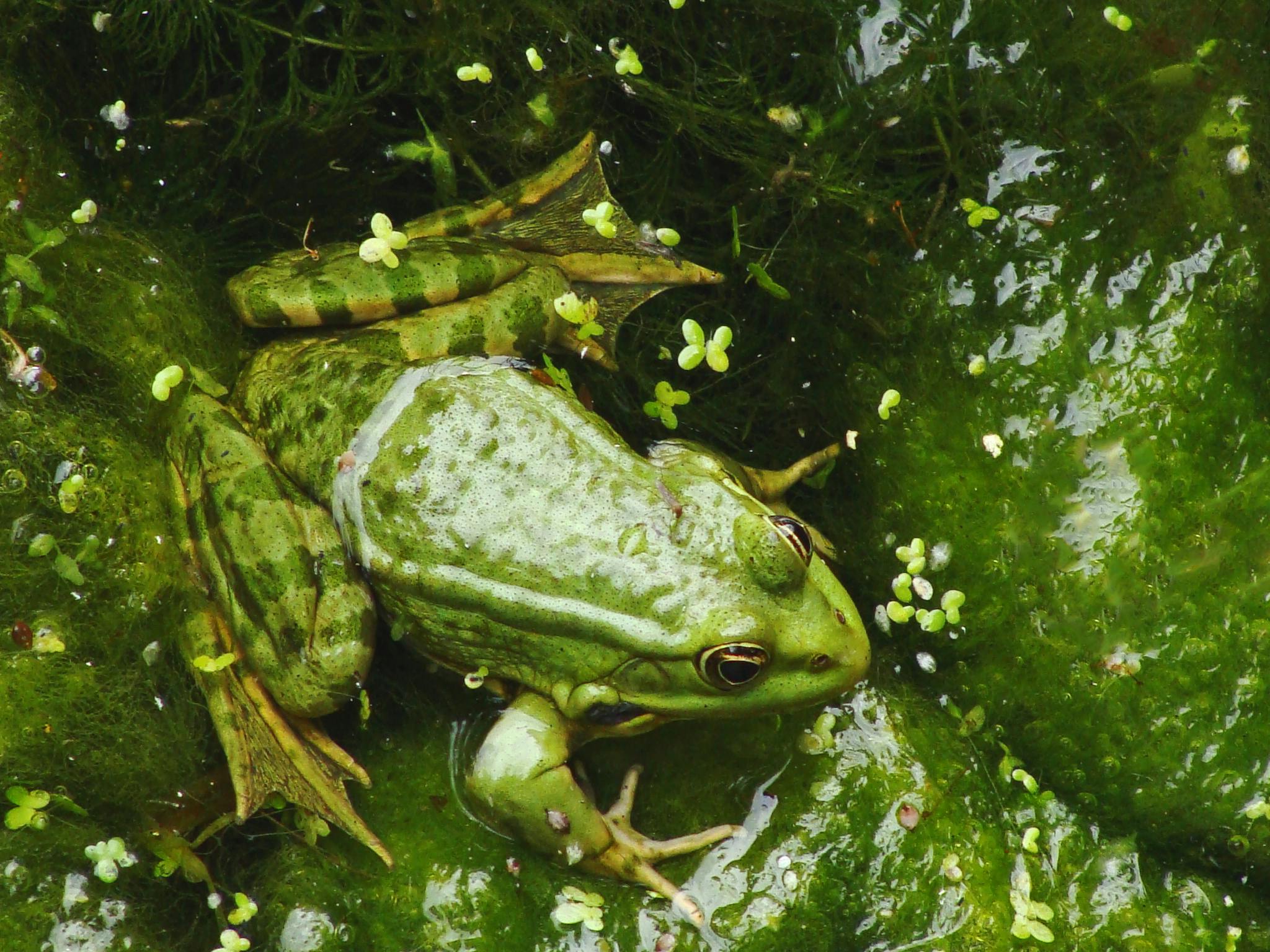
For over three decades, a widely used pesticide has quietly seeped into our drinking water and ecosystems, carrying implications far beyond its agricultural purpose. Known as atrazine, this chemical has been celebrated for its ability to boost crop yields, yet its hidden effects on the natural world and potentially human health are nothing short of alarming.
Recent research has uncovered a startling phenomenon involving atrazine’s impact on amphibians, raising profound questions about the broader consequences of this chemical in our environment. What does this mean for the delicate balance of ecosystems—and could humans also be at risk?
What Is Atrazine?
Atrazine is a synthetic herbicide belonging to the triazine class, extensively utilized in agriculture to manage broadleaf and grassy weeds. Since its introduction in 1958, it has become one of the most widely applied pesticides globally, particularly prevalent in the United States. Its primary applications include crops like corn, sorghum, and sugarcane, where it is valued for its effectiveness and cost-efficiency.
However, atrazine’s extensive use has led to significant environmental concerns. It is frequently detected as a contaminant in ground, surface, and drinking water, raising alarms about its persistence and mobility in the environment.
Beyond environmental contamination, atrazine is recognized as a potent endocrine disruptor. Research indicates that it can interfere with hormonal systems across various vertebrate classes, including fish, amphibians, reptiles, birds, and mammals. Notably, studies have shown that atrazine exposure can lead to the feminization and chemical castration of amphibians, such as frogs.
The widespread presence of atrazine in ecosystems and its potential to disrupt endocrine functions have prompted regulatory scrutiny. While the European Union banned atrazine in 2004 due to groundwater contamination concerns, it remains widely used in the United States. The U.S. Environmental Protection Agency (EPA) continues to evaluate atrazine’s safety, considering its environmental and public health implications.
Atrazine’s Effect on Frogs
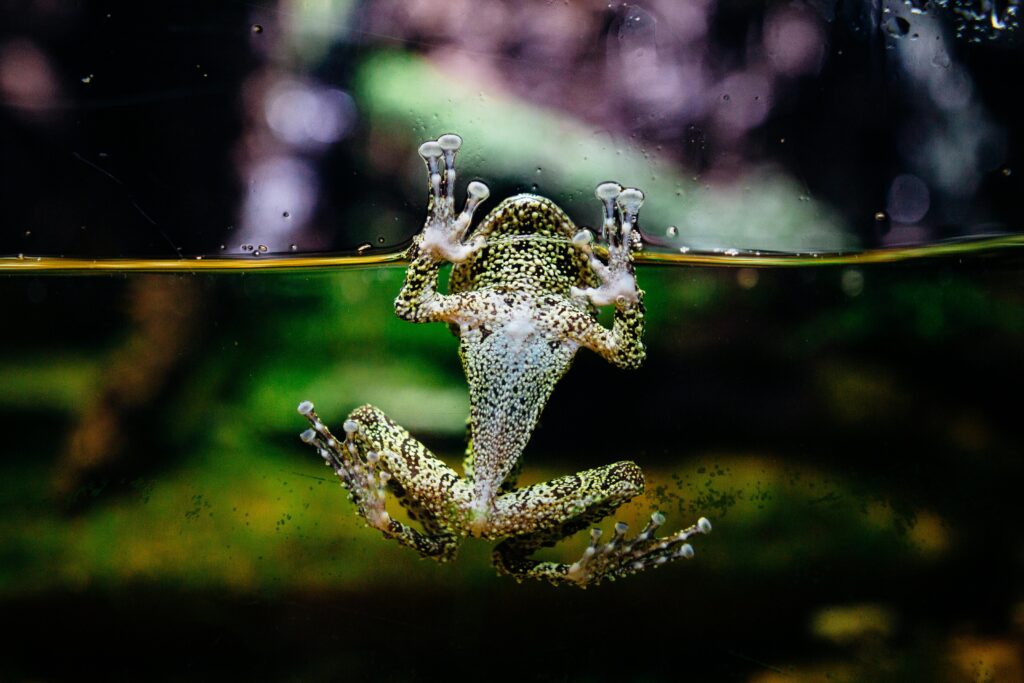
Atrazine, a widely used herbicide, has been shown to cause significant endocrine disruption in amphibians, particularly frogs. Research led by Professor Tyrone B. Hayes at the University of California, Berkeley, revealed that exposure to atrazine can result in the feminization and chemical castration of male frogs.
In a controlled study, 40 male African clawed frogs (Xenopus laevis) were raised in water containing 2.5 parts per billion (ppb) of atrazine, a concentration commonly found in the environment. Over a period of three years, it was observed that approximately 75% of the exposed male frogs exhibited reduced testosterone levels and decreased fertility, effectively rendering them chemically castrated. Notably, about 10% of the male frogs developed into fully functional females capable of mating with males and producing viable eggs.
These findings suggest that atrazine disrupts normal hormonal functions by enhancing the activity of aromatase, an enzyme that converts testosterone into estrogen. This hormonal imbalance leads to the demasculinization and feminization observed in the affected frogs.
The implications of these results are profound, as amphibians are often considered indicator species, reflecting the health of their ecosystems. The ability of atrazine to induce such dramatic changes in frogs raises concerns about its potential effects on other wildlife and possibly humans. As Professor Hayes noted, “When you have studies all over the world showing problems with atrazine in every vertebrate that has been looked at… all of them can’t be wrong.”
Potential Risks to Human Health
Atrazine’s extensive use in agriculture has led to its pervasive presence in drinking water supplies, raising significant concerns about its potential impact on human health. As a known endocrine disruptor, atrazine can interfere with hormonal systems, potentially leading to various health issues.
- Endocrine Disruption and Reproductive Health: Studies have indicated that atrazine exposure may be linked to reproductive health problems in humans. Research has shown that atrazine can increase human aromatase activity, leading to elevated estrogen levels, which may disrupt normal hormonal balance. Additionally, some studies have associated atrazine exposure with low fertility, low sperm count, and poor semen quality in humans living in agricultural areas.
- Cancer Risks: There is evidence suggesting a potential association between atrazine exposure and certain cancers. For instance, a study detected an elevated risk of non-Hodgkin lymphoma for individuals who had both atrazine and nitrate in their drinking water. However, the International Agency for Research on Cancer (IARC) has classified atrazine as “not classifiable as to its carcinogenicity to humans” (Group 3), indicating that current evidence is insufficient to establish a definitive link.
- Birth Defects and Developmental Issues: Research has explored the potential connection between atrazine exposure and adverse birth outcomes. Some studies have reported associations between maternal exposure to atrazine-contaminated drinking water and increased risks of birth defects, low birth weights, and preterm births. However, findings across studies have been inconsistent, and further research is needed to confirm these associations.
- Regulatory Perspectives: The U.S. Environmental Protection Agency (EPA) has evaluated atrazine’s safety and, as of 2006, stated that “the risks associated with the pesticide residues pose a reasonable certainty of no harm.” However, ongoing research and emerging studies continue to inform regulatory assessments, and the EPA periodically reviews atrazine’s safety profile to ensure public health protection.
Environmental Impact of Atrazine

Atrazine’s extensive application in agriculture has led to its widespread presence in various environmental compartments, notably soil and water systems. This pervasive distribution has raised significant concerns regarding its ecological effects.
- Soil Health: Atrazine exhibits persistence in soil environments, which can adversely affect soil health. Its presence has been linked to alterations in microbial communities, potentially inhibiting the growth of non-target plant species. Such disruptions can lead to reduced soil fertility and diminished agricultural productivity.
- Water Contamination: Due to its moderate water solubility, atrazine readily disperses beyond its initial application sites through surface runoff, especially following rainfall events. This mobility results in the contamination of surface and groundwater resources, posing risks to aquatic ecosystems and potentially affecting human drinking water supplies.
- Aquatic Ecosystems: In aquatic environments, atrazine has been shown to modify growth, enzymatic processes, and photosynthesis in plants. It exerts mutagenic and genotoxic effects, leading to defective cell division, erroneous lipid synthesis, and hormonal imbalances in aquatic fauna and non-target animals.
- Biodiversity and Wildlife: Atrazine’s impact extends to terrestrial wildlife, particularly amphibians. Studies have demonstrated that atrazine exposure can cause demasculinization in male northern leopard frogs, even at low concentrations. This effect is indicative of atrazine’s role as an endocrine disruptor, potentially contributing to global amphibian declines.
- Regulatory Perspectives: The environmental persistence and widespread detection of atrazine have prompted regulatory scrutiny. The European Union banned atrazine in 2004 due to groundwater contamination concerns. In contrast, the United States Environmental Protection Agency (EPA) continues to evaluate atrazine’s safety, considering its environmental and public health implications.
Regulatory Actions Surrounding Atrazine
Atrazine, a herbicide widely used in agriculture, has long been a lightning rod for debates over its safety and environmental impact. Its pervasive contamination of water sources and potential health risks have led to a patchwork of regulatory responses worldwide, reflecting differing priorities and risk assessments.
The European Union took decisive action in 2004, banning atrazine outright. This bold move stemmed from mounting evidence of groundwater contamination and the chemical’s potential to harm both ecosystems and public health. The EU’s zero-tolerance policy for such risks underscores its commitment to environmental stewardship and consumer safety.
In contrast, the United States has maintained atrazine’s approval, albeit under periodic scrutiny. The Environmental Protection Agency (EPA) has wrestled with balancing its economic benefits for farmers against its environmental toll:
- 2003: The EPA controversially reapproved atrazine despite growing scientific concerns about its impact on aquatic life and hormonal disruption in animals.
- 2020: An interim review led to partial restrictions, including a ban on its use in Hawaii, Alaska, and U.S. territories, as well as the removal of roadside applications. These measures aimed to mitigate its environmental footprint while preserving its agricultural utility.
This piecemeal approach has drawn criticism from environmental advocates who argue for stronger protections and from agricultural stakeholders who value atrazine for its efficacy in weed control.
Global Regulatory Variances
Elsewhere, responses to atrazine reflect a mix of caution and adaptation:
- Australia: Restrictions on non-agricultural applications have been implemented to reduce environmental contamination, signaling a middle ground between outright bans and unrestricted use.
- Canada: Special reviews have led to reduced atrazine usage, with ongoing assessments to ensure that health and environmental protections keep pace with scientific findings.
These differing regulatory approaches highlight the complex interplay between environmental priorities, economic interests, and public health concerns, making atrazine a global case study in the challenges of chemical regulation.
How to Protect Your Family Against Pesticides and Herbicides

Given the potential health risks associated with pesticides like atrazine, it’s crucial to adopt strategies that minimize exposure. Here are some effective measures:
1. Consume Organic and Locally Grown Produce
Opting for organic and locally sourced fruits and vegetables can significantly reduce pesticide intake. Organic farming practices limit chemical usage, and local produce often involves fewer pesticides due to sustainable farming methods.
2. Filter Drinking Water
Utilizing water filtration systems, such as those employing activated carbon or reverse osmosis, can effectively remove pesticide residues, including atrazine, from drinking water. This step ensures safer consumption for your family.
3. Support Wetland Conservation
Wetlands naturally filter pollutants, including pesticides, from water sources. Engaging in and supporting wetland conservation efforts can enhance this natural filtration, leading to cleaner water supplies.
4. Implement Natural Weed Control Methods
Adopting alternatives to chemical herbicides, such as mulching, hand weeding, and cover cropping, can effectively manage weeds without introducing harmful chemicals into the environment.
5. Choose Native Plant Species for Landscaping
Landscaping with native plants reduces the need for pesticides, as these species are typically more resistant to local pests and diseases, promoting a healthier ecosystem.
6. Purchase Hormone-Free Meat Products
Selecting hormone-free meat can decrease exposure to endocrine-disrupting chemicals that may accumulate in livestock exposed to pesticides like atrazine.
7. Enhance Immune Health
Incorporating antioxidant-rich foods, such as fruits and vegetables, and probiotic-rich items like yogurt, can strengthen the immune system, aiding the body in combating potential toxins.
Atrazine: From Farmlands to Drinking Water
Atrazine’s story is one of stark contrasts—praised for its agricultural benefits while raising serious red flags for ecosystems, wildlife, and human health. Decades of scientific research reveal that this herbicide’s effects stretch far beyond weeds, disrupting the hormonal balance in amphibians and contaminating water supplies critical to human survival.
The call to action is clear: informed choices and sustainable practices can mitigate the risks associated with atrazine. By advocating for stricter regulations, supporting safer farming methods, and adopting individual protective measures, we can work towards a future where agricultural progress doesn’t come at the cost of our environment and health.
As we uncover more about atrazine and its long-term consequences, one truth remains certain—the decisions we make today will shape the health of our ecosystems and communities for generations to come.
Animals
Highly Intelligent and Possibly Invincible ‘Super Pigs’ Are Invading America

Something strange is stirring in America’s northern plains. Farmers, wildlife experts, and even ecologists are sounding the alarm about an unexpected invader: super pigs. These aren’t your typical barnyard animals or garden-variety feral hogs. They’re smarter, tougher, and spreading faster than anyone anticipated.
Originating in Canada, these hybrid creatures are moving southward, leaving destruction in their wake. They’ve adapted to survive harsh winters, evade capture, and disrupt the delicate balance of ecosystems. What’s driving their unstoppable spread, and why are they so difficult to control? The answers could change how we approach invasive species—and protect the landscapes they’re tearing through.
The Rise of ‘Super Pigs’: From Farming Experiment to Ecological Crisis

What started as a practical solution in Canada’s farming industry has spiraled into an ecological nightmare. Back in the 1980s, farmers bred domestic pigs with Eurasian wild boars to create hardy hybrids capable of surviving harsh winters and increasing meat production. On paper, it seemed like a win-win—tougher animals and higher yields. But when the demand for wild boar meat plummeted, the story took a dark turn.
Left with few options, some farmers released these resilient hybrids into the wild. What followed was a perfect storm: animals designed to thrive in challenging conditions adapting, reproducing, and spreading across Canada’s provinces. These “super pigs” didn’t just survive—they thrived, thanks to their intelligence and ability to evade traditional control methods.
Now, they’re pushing toward the northern United States, creating new challenges for wildlife managers and farmers. The unintended consequences of this farming experiment highlight a harsh truth: innovations, no matter how promising, can spiral out of control when the balance of nature is disrupted.
Why Super Pigs Are Hard to Stop
Super pigs have turned out to be a nightmare for ecologists and farmers alike, defying expectations at every turn. Their ability to thrive in extreme cold has left experts baffled. “That they can survive in such a cold climate is one of the big surprises of this issue,” says Ryan Brook, leader of the University of Saskatchewan’s Canadian Wild Pig Research Project. While most animals would struggle in frigid conditions, these hybrids dig through snow for food and use their wits to outlast even the harshest winters. It’s not just resilience—it’s survival with style.
But their cold-weather grit is only part of the story. Super pigs are ecological bulldozers. They’ll eat just about anything, from crops to wildlife. “Wild hogs feed on anything,” Brook explains. “They gobble up tons and tons of goslings and ducklings in the spring. They can take down a whitetail deer, even an adult.” That voracious appetite puts native species like deer, elk, and waterfowl in serious danger, as they’re outcompeted or outright preyed upon. What started as a novelty—something hunters once celebrated—has become an ecological disaster. As Brook bluntly puts it, “The downsides outweigh any benefit wild hogs may have as a huntable species.”
Adding to the challenge is their adaptability. These animals aren’t just hardy—they’re smart. They’ve learned to evade hunters, avoid traps, and exploit any resource available. For wildlife managers, it’s a constant game of catch-up. Containing their spread and minimizing the damage will require urgent, large-scale collaboration, but with their growing numbers and unmatched resilience, it’s an uphill battle that shows no signs of easing.

Super Pigs and Their Devastating Impact on Ecosystems
It’s hard to overstate just how much damage super pigs are causing. These voracious animals don’t just snack on the occasional plant or small animal—they devour everything in sight. “Wild hogs feed on anything,” says Ryan Brook, leader of the Canadian Wild Pig Research Project. “They gobble up tons and tons of goslings and ducklings in the spring. They can take down a whitetail deer, even an adult.” Let that sink in for a moment. These pigs aren’t just nibbling at the edges of the ecosystem—they’re bulldozing through it, disrupting food chains and endangering species that are already struggling to survive.
But it’s not just what they eat; it’s how they behave. Super pigs are notorious for their rooting habits, digging up soil like nature’s wrecking balls. This isn’t just bad news for native plants—they’re literally tearing apart habitats. Imagine a field left looking like a plowed construction site, except there’s no rebuilding plan. The consequences? Accelerated erosion, invasive species taking over, and ecosystems struggling to stay intact. And let’s not forget the farmers who wake up to find their cornfields and soybean crops destroyed overnight—because yes, super pigs aren’t picky about where they cause chaos.
And then there’s the disease factor. These animals aren’t just carriers of destruction—they also spread illness. One of the biggest fears is African swine fever, a highly contagious disease that could devastate livestock and disrupt the meat industry. Even humans and wildlife are at risk. All of this adds up to a massive environmental and economic problem, one that can’t be ignored. It’s a reminder that when invasive species run wild, the damage spreads far and wide—and we all end up paying the price.
Combating the Super Pig Invasion
Dealing with super pigs isn’t as simple as grabbing a trap and hoping for the best. These animals are clever, resilient, and spread fast, so tackling the problem demands a mix of traditional methods, cutting-edge strategies, and community involvement. One of the most effective approaches so far has been large-scale trapping. Corral traps baited to attract entire groups of pigs—known as sounders—can significantly reduce populations when used correctly.
For a more surgical approach, wildlife managers are turning to the “Judas pig” technique. As Ryan Brook, head of the Canadian Wild Pig Research Project, explains, this method involves collaring a single pig and tracking it back to its companions. “The idea is that you go and find that collared animal, remove any pigs that are with it, and in an ideal world, let it go again—it will just continue to find more and more pigs.” It’s a clever tactic that capitalizes on the pigs’ natural social behavior.
In areas with open terrain, aerial hunting using helicopters offers a rapid way to target large groups of pigs across vast areas. But it’s not just up to the professionals. Public participation is a key piece of the puzzle. Campaigns like “Squeal on Pigs” encourage locals to report sightings, giving wildlife managers the intel they need to act quickly. Regulations have also been put in place to crack down on the release and transport of live pigs, with penalties aimed at deterring illegal activity.
Combating the super pig invasion requires all hands on deck. From innovative methods like Judas pigs to community-driven initiatives, the goal is clear: stop these invaders before their impact becomes irreversible. With coordinated action, there’s still hope to protect ecosystems, farms, and communities from further damage.
Minnesota’s Fight Against Feral Swine

Minnesota has positioned itself as a key player in the battle against feral swine, taking proactive steps to keep these invasive animals at bay. While the state has been officially declared free of feral swine since the USDA eradicated a small group in 2016, the threat is far from over. “No truly wild pigs have entered the state,” says Gary Nohrenberg, Minnesota’s director of Wildlife Services. Still, officials are maintaining a watchful eye, knowing how quickly populations can spiral out of control if even a few pigs slip through the cracks.
To stay ahead, Minnesota’s Department of Natural Resources is preparing a comprehensive report aimed at identifying weak points in its current management strategies. This will guide new preventive measures to ensure feral swine don’t establish a foothold. The U.S. Department of Agriculture (USDA) is also stepping up its game, deploying aircraft and drones to monitor activity along the northern border—a critical line of defense against potential incursions.
Minnesota’s efforts are part of a larger, nationwide struggle. The USDA estimates there are now 6 million feral swine across 35 states, wreaking havoc on agriculture and ecosystems alike. While states like Vermont and Washington, with smaller populations, have made strides in eradication, heavily impacted areas like Texas face a tougher battle. “I think we’re making great strides toward success,” says Mike Marlow, assistant director of the National Feral Swine Management Program, “but eradication is not in the near future.”
Despite the challenges, Minnesota’s collaborative approach—paired with federal resources—offers hope. By combining vigilance, innovative surveillance, and strategic planning, the state is setting an example for how to prevent a small problem from becoming a national crisis.
A Growing Threat That Demands Urgent Action
The rise of super pigs in North America is a cautionary tale of unintended consequences. What began as an agricultural experiment has morphed into an ecological and economic crisis, with these resilient invaders leaving a path of destruction in their wake. From disrupting ecosystems and threatening native wildlife to destroying crops and spreading disease, the impact of super pigs is as varied as it is devastating.
The fight against this invasive species requires a united front. Innovative strategies like the Judas pig technique, aerial hunting, and large-scale trapping have shown promise, but these measures alone are not enough. States like Minnesota are leading by example, demonstrating how vigilance, strategic planning, and community involvement can slow the spread. Yet, as experts have noted, eradication remains a distant goal.
If there’s one lesson to take from the super pig crisis, it’s this: when nature is thrown out of balance, the consequences can ripple far and wide. Stopping super pigs will require sustained effort, bold innovation, and the commitment of everyone impacted—before the damage becomes irreversible.
Animals
Three ‘Rhino Poachers’ Eaten By Lions After Breaking In To South African Game Reserve
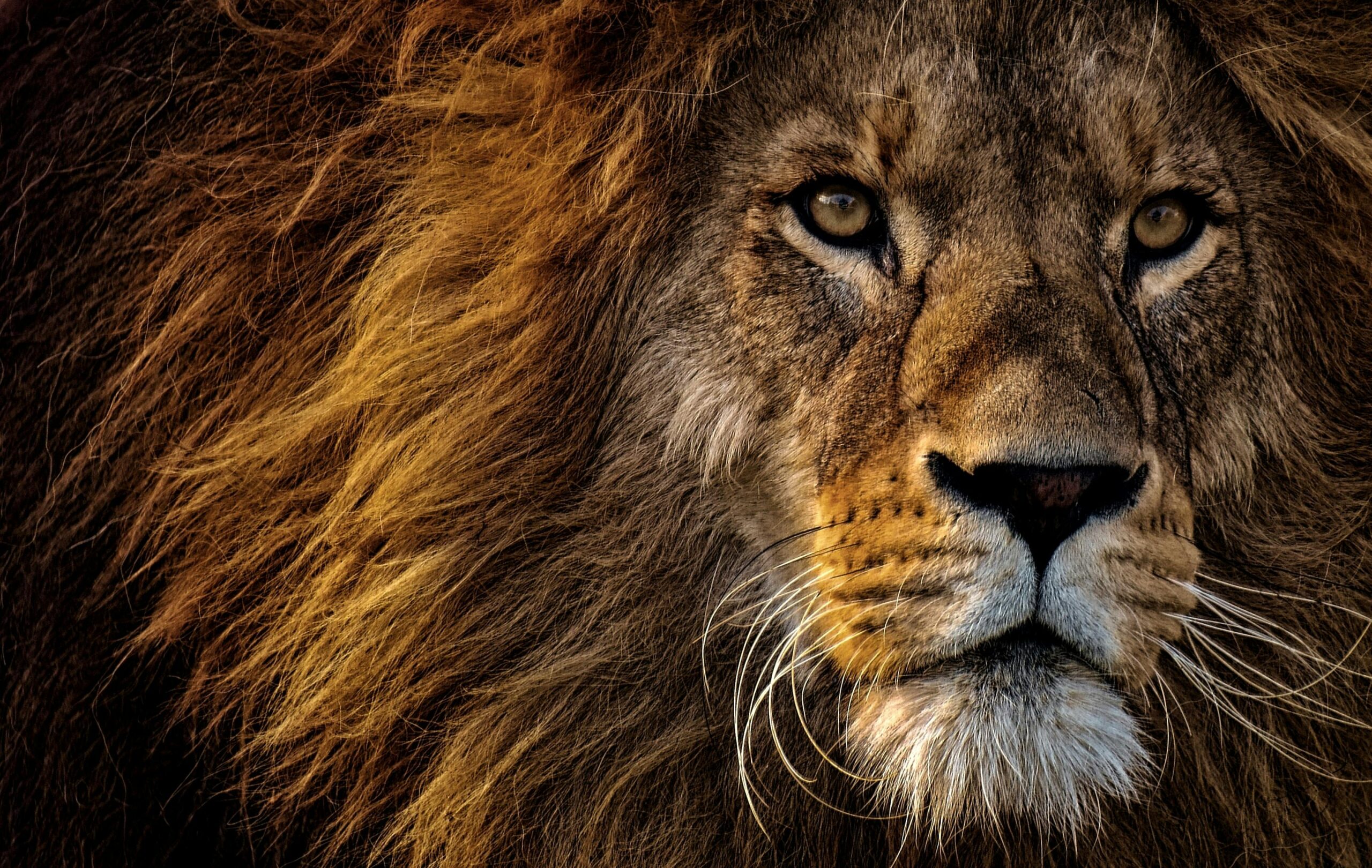
Africa’s rich wildlife has long been a symbol of the continent’s natural beauty, but this heritage faces a relentless threat from poaching. Iconic species like rhinos and elephants are being driven toward extinction, targeted for their horns, tusks, and other body parts that fuel an illegal, global trade. This crisis doesn’t just harm animals—it disrupts ecosystems and affects local communities that rely on balanced biodiversity for their livelihoods.
While conservationists work tirelessly to protect these species, the battle is far from over. Sometimes, though, nature reminds us of its own power. A striking example of this unfolded in South Africa’s Sibuya Game Reserve, where a group of poachers met an unexpected and deadly fate. This incident, both grim and symbolic, sheds light on the larger struggle to protect Africa’s endangered wildlife from exploitation.
The Sibuya Game Reserve Incident: When Poachers Became Prey
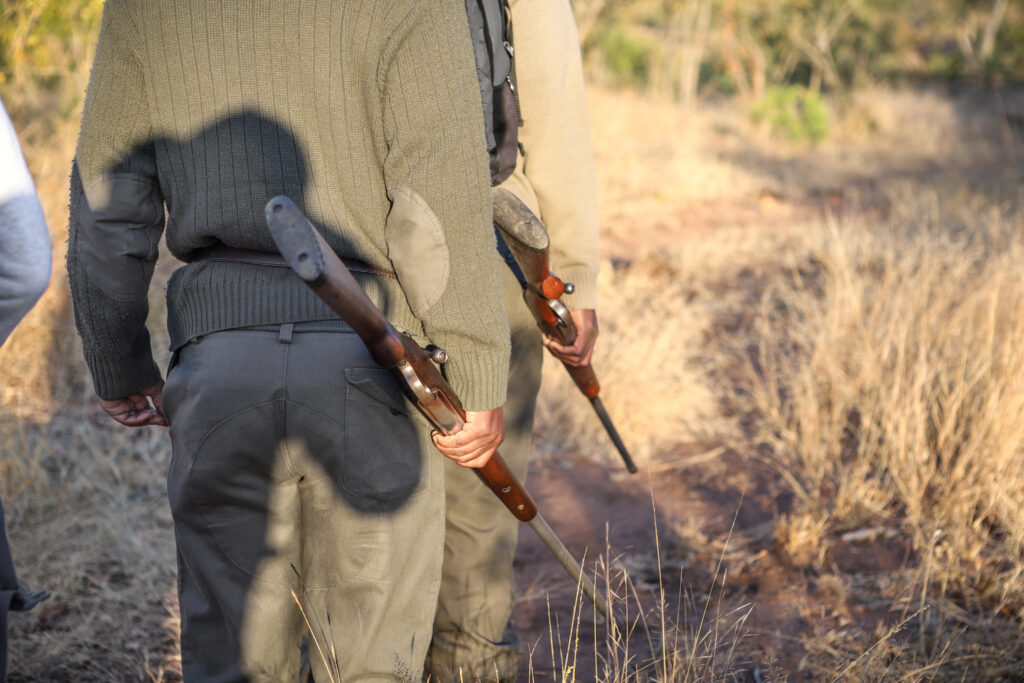
In 2018, South Africa’s Sibuya Game Reserve became the scene of an extraordinary and tragic event. A group of poachers, armed with tools to kill rhinos and harvest their horns, entered the reserve under the cover of night. Their mission, fueled by the lucrative black market trade in rhino horn, took a fateful turn when they crossed paths with a pride of lions.
The outcome was brutal and final. The poachers became prey themselves, leaving behind only scattered remains, tools, and torn shoes. For the rangers who discovered the grisly scene, it was a sobering reminder of the risks poachers take—and the raw power of the animals they exploit.
While some saw the incident as a form of poetic justice, it sparked deeper conversations about the dangers of poaching and its root causes. It also served as a grim reminder that nature, often seen as fragile in the face of human greed, has a resilience and unpredictability that should not be underestimated.
The Economics of Rhino Poaching
Rhino poaching isn’t just about killing animals—it’s part of a massive, illegal trade fueled by myths and money. In parts of Asia, rhino horns are falsely believed to have medicinal powers or represent wealth and success. Despite being made of keratin, the same material as human fingernails, they’re sold for jaw-dropping prices on the black market.
This high demand has turned poaching into big business, run by well-funded criminal networks. These syndicates exploit struggling communities, recruiting people to do the dangerous work of killing rhinos, while they smuggle the horns into global markets. The damage goes beyond the animals; entire ecosystems suffer, and local communities lose out on the balance they depend on for farming, tourism, and livelihoods.
What makes it worse? These syndicates have resources conservationists can only dream of. They bribe officials, use high-tech gear, and stay one step ahead of enforcement. It’s clear that saving rhinos isn’t just about protecting them on the ground. The demand for their horns needs to stop, and the criminal operations behind this cruel trade need to be dismantled.
Consequences for Wildlife and Ecosystems
Losing rhinos isn’t just sad—it’s a problem that ripples through entire ecosystems. Rhinos play a huge role in shaping their environments. They graze, stomp around, and help keep plants in check, which creates space for other animals to thrive. When they disappear, it’s not just about losing an iconic species—it’s about throwing nature off balance.
For example, black rhinos and white rhinos were once everywhere across Africa. Now, their numbers have dropped so much that the northern white rhino is functionally extinct, with only a few individuals left, protected 24/7 by armed guards. This isn’t just a blow to nature—it’s a hit to the local communities who depend on healthy ecosystems for farming, clean water, and wildlife tourism.
Without rhinos, habitats can change in ways that affect countless other species. The plants grow differently, other animals struggle to survive, and even local economies suffer because fewer tourists visit. Saving rhinos isn’t just about them—it’s about protecting everything connected to them, including the people who rely on nature to make a living.
Empowering Communities to Combat Poaching
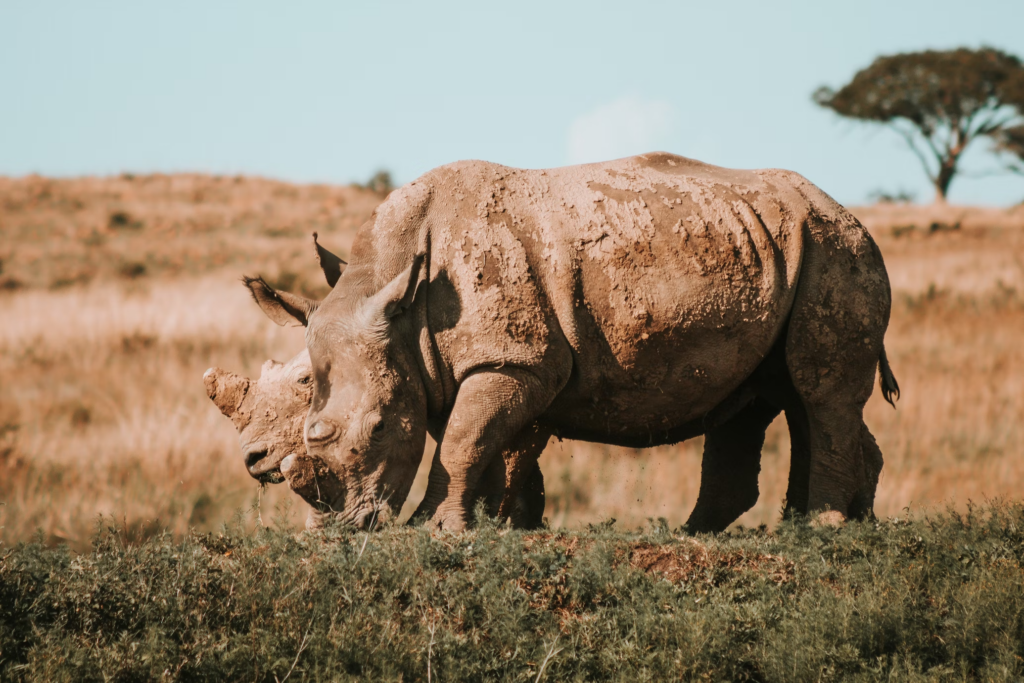
The people who live near wildlife reserves are often the first to notice when something’s wrong. They hear the gunshots, spot unfamiliar footprints, or see strangers moving through their land. But for many of these communities, life is tough. Jobs are scarce, and poaching can seem like a way to put food on the table—no matter how risky or illegal it is.
That’s why helping these communities is one of the best ways to fight poaching. Giving people jobs that protect wildlife, like working in eco-tourism or joining ranger teams, turns them into partners in conservation instead of participants in poaching. Programs that teach people how important animals like rhinos are for the land—and for future generations—can also make a big difference.
The challenge, though, is corruption. Poaching syndicates often bribe their way past laws and officials, making it harder to protect wildlife. But when communities feel like they have a stake in keeping rhinos alive, they’re far more likely to stand up to those trying to exploit them. Conservation isn’t just about saving animals—it’s about giving people hope and a reason to care.
A Sobering Reminder of Nature’s Balance
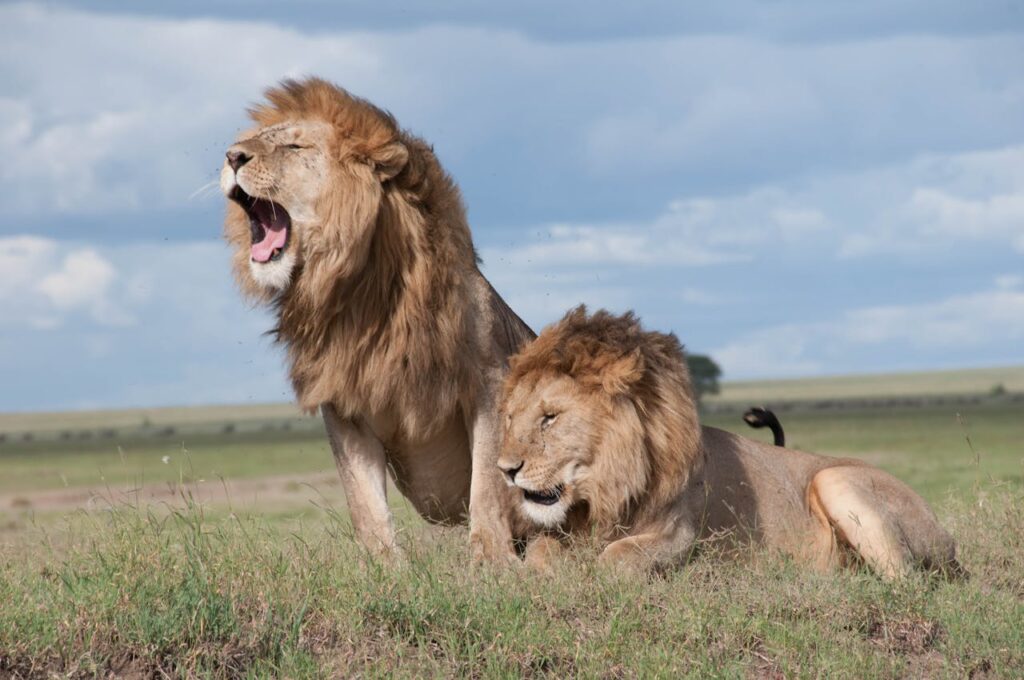
The Sibuya Game Reserve incident is more than just a story of poachers meeting an unexpected fate. It serves as a stark reminder of the delicate balance between humanity and nature—a balance that is too often disrupted by greed and exploitation. While the lions’ actions may seem like poetic justice, the root of the issue remains unresolved. Poaching is a symptom of deeper societal and economic problems, from poverty to cultural misconceptions about wildlife.
This event also underscores the power of nature to resist human interference. Despite humanity’s advances, ecosystems remain intricate and unpredictable, capable of responding in ways that remind us of our place in the natural order. The incident challenges us to reflect on our actions and their consequences, not only for the animals we endanger but also for ourselves as stewards of this planet.
Protecting endangered species like rhinos requires a global effort, one that combines education, enforcement, and community engagement. By addressing the underlying drivers of poaching and fostering a greater respect for nature, we can begin to restore balance and ensure the survival of these magnificent creatures for generations to come.
Protecting Rhinos: A Fight for Balance in Nature
The fight against poaching is about more than just saving rhinos—it’s about protecting the balance of nature and securing a future where people and wildlife can thrive together. The Sibuya Game Reserve incident is a stark reminder of the risks and consequences tied to exploiting the natural world. While the story might seem like nature’s way of evening the score, it also highlights the deeper issues we need to address.
Conservation isn’t just the responsibility of governments or big organizations—it’s something we all play a part in. Supporting initiatives that provide communities with better livelihoods, spreading awareness about the truth behind rhino horn myths, or even contributing to anti-poaching programs can make a difference. Every small effort adds up.
Rhinos, and the ecosystems they help sustain, need more than protection—they need a world that values their existence. By working together, we can turn the tide and ensure these incredible animals have a future. Nature has shown its strength; now it’s our turn to show compassion and responsibility.
Animals
Spray This Simple 2-Ingredient Mixture & You Will Never See Spiders, Fleas, Flies, Lice, Mice, Moths and More in Your Home
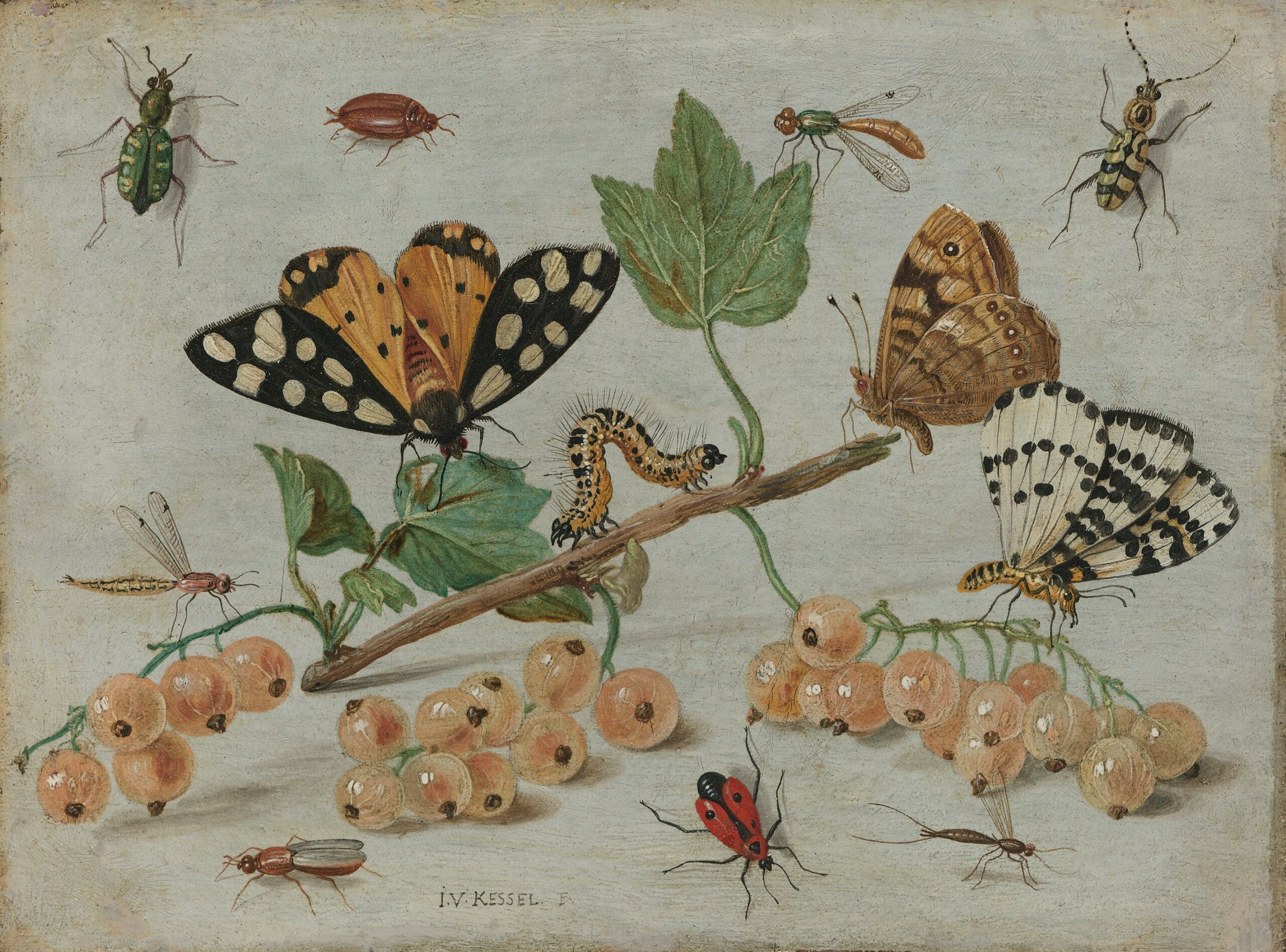
Picture this: you’re relaxing at home, enjoying a peaceful evening, when an unexpected guest scurries across the floor—a spider, perhaps, or an unwelcome ant. Most people’s instinct is to reach for the nearest can of chemical spray, but what if there was a simpler, safer, and all-natural solution lurking in your pantry?
Enter peppermint oil—nature’s secret weapon against a variety of common household pests. While you may associate its fresh scent with holidays or tea, this unassuming essential oil packs a surprising punch when it comes to keeping creepy crawlies at bay. But how exactly does it work, and why are so many people turning to peppermint as a natural alternative?
As you read on, you’ll discover the science behind peppermint oil’s pest-repelling properties, practical tips for using it in your home, and essential precautions to ensure it’s safe for everyone—including your pets. Ready to unlock the power of peppermint?
Why Peppermint Oil?

Peppermint oil has earned its reputation as an effective natural remedy for repelling pests, and there’s solid science to back this claim. While it may be a favorite in aromatherapy or teas, this essential oil contains powerful compounds that drive pests away. The key components, menthol and menthone, disrupt the sensory pathways of pests, making peppermint oil an excellent natural deterrent.
In a 2001 study conducted at Auburn University, researchers tested the effects of mint oil on two common species of cockroaches—American and German roaches. The results were remarkable: peppermint oil repelled 100% of the cockroaches over the 14-day trial. These findings demonstrated that peppermint oil not only repels roaches but can also kill them under prolonged exposure. Its toxicity to insects stems from these active compounds, which are present in high concentrations in peppermint oil.
Beyond cockroaches, peppermint oil works on a variety of other pests. Spiders, for example, are extremely sensitive to peppermint because they “taste” with their legs. The strong smell overwhelms their sensory receptors, forcing them to retreat. Similarly, peppermint oil can repel fleas, lice, ants, mice, and even moths. Research has also shown that when applied to the skin, peppermint oil can prevent mosquito bites for up to 150 minutes.
The advantage of peppermint oil lies in its ability to provide natural pest control without the risks associated with chemical pesticides. Unlike DEET, a common ingredient in store-bought repellents that has been linked to health issues in humans and animals, peppermint oil is non-toxic when used properly. It’s a win-win: you keep pests out of your home, and your environment stays chemical-free.
Practical Applications and DIY Peppermint Insect Repellent Recipes
Peppermint oil serves as a highly versatile and effective natural solution for pest control, providing an eco-friendly alternative to chemical-based repellents. Whether you’re dealing with spiders, ants, cockroaches, or mosquitoes, peppermint oil can be incorporated into various practical applications around your home. By making your own DIY repellent, you can control both the ingredients and the concentration, ensuring a safe environment for your family and pets.
Peppermint Oil Spray
The most common way to use peppermint oil is by creating a spray. This versatile method allows you to target areas where pests are most active, such as around windows, doorways, or countertops. To make the spray:
- Mix 10-15 drops of peppermint essential oil with one cup of water.
- Add a teaspoon of dish soap to help the oil mix more evenly with the water.
- Shake the bottle thoroughly before each use, and spray directly on surfaces where bugs are likely to enter.
The peppermint spray works well against spiders, ants, and cockroaches. For outdoor use, it can also be sprayed around patios and garden furniture to repel mosquitoes. Regular reapplication is essential as the scent will fade over time, particularly after rain or cleaning.
Peppermint-Soaked Cotton Balls
In areas where a spray might not reach effectively—like small spaces or hard-to-reach corners—using peppermint-soaked cotton balls can offer a more concentrated and long-lasting effect. Here’s how:
- Soak cotton balls in undiluted peppermint oil.
- Place them in areas such as cupboards, closets, and under sinks where pests commonly hide.
This method is especially useful for keeping ants, spiders, and cockroaches away. Refresh the cotton balls every few weeks to maintain potency.
Enhancing Your Repellent with Other Essential Oils
To increase the effectiveness of your homemade spray or cotton ball repellent, you can combine peppermint oil with other essential oils known for their pest-repellent properties. For instance, tea tree oil is excellent for repelling ants and cockroaches, while lavender oil works well against flies and mosquitoes. Adding a few drops of these oils to your peppermint-based spray can create a more comprehensive solution.
Safety Concerns and Pet Precautions

While peppermint oil is a fantastic natural solution for keeping pests at bay, it’s essential to exercise caution if you have pets, particularly cats and dogs. Peppermint oil can be toxic to pets, especially when used in high concentrations or ingested. For instance, dogs may experience symptoms such as vomiting, lethargy, or skin irritation if exposed to undiluted peppermint oil. Cats, even more sensitive, can suffer from severe reactions like tremors or respiratory issues.
To safely use peppermint oil around pets, always dilute it significantly—use 10-15 drops of peppermint oil per cup of water—and avoid spraying it directly in areas where your pets frequently play, sleep, or eat. Make sure your pets have a way to avoid or exit rooms where you’ve diffused peppermint oil, and never leave a running diffuser unattended in a closed room. Additionally, if you suspect your pet has been exposed to peppermint oil and is showing signs of distress, contact your vet immediately.
When considering flea or tick prevention, it’s better to consult a veterinarian about safe alternatives to peppermint oil, which can sometimes be too potent for pets.
Comparison With Other Natural Remedies
When it comes to natural pest control, peppermint oil is often at the top of the list for its versatility and effectiveness against a range of pests, including spiders, ants, and mosquitoes. However, several other essential oils offer similar, and in some cases complementary, benefits. Understanding how peppermint compares to other natural remedies can help you make informed decisions about your pest control strategy.
- Tea Tree Oil: Tea tree oil, known for its strong antibacterial and antifungal properties, is also an effective insect repellent, particularly against ants, cockroaches, and dust mites. While peppermint oil is potent against spiders and mice, tea tree oil’s strength lies in its ability to target common indoor pests like ants and termites. However, tea tree oil can be more toxic to pets, especially cats and dogs, so extra caution is needed when using it around animals.
- Lavender Oil: Lavender oil is another natural insect repellent, often used to ward off flies, moths, and mosquitoes. Lavender has a calming scent, making it a good choice for indoor use where a more relaxing atmosphere is desired. While peppermint oil provides strong protection against more robust pests like cockroaches and spiders, lavender excels in repelling flying insects and can double as a room freshener.
- Eucalyptus Oil: Eucalyptus oil, particularly known for its effectiveness against mosquitoes, fleas, and dust mites, is a strong outdoor repellent. Its sharp aroma acts as a barrier that flying pests dislike, making it an excellent choice for outdoor seating areas. Eucalyptus is particularly good for creating a bug-free zone during summer months, but it can be less versatile indoors compared to peppermint oil, which works well in tight spaces like cabinets and baseboards.
- Citronella Oil Citronella oil is one of the most widely recognized natural remedies for repelling mosquitoes. Its citrusy scent masks human odors that attract mosquitoes, making it highly effective for outdoor use. Citronella is often used in candles or torches for backyard pest control, whereas peppermint oil is more effective in enclosed areas where direct application is needed.
Each of these oils has unique strengths, and combining them can provide a comprehensive natural pest control strategy. For instance, blending peppermint, eucalyptus, and citronella oils can target a wider range of pests both indoors and outdoors. This way, you can harness the specific strengths of each oil to create an eco-friendly, non-toxic solution for pest management.
The Natural Approach to Pest Control

Choosing peppermint oil and other natural remedies for pest control not only protects your home but also ensures the safety of your family, pets, and the environment. As we’ve seen, peppermint oil is highly effective against a range of pests, from ants and spiders to mosquitoes, offering a simple, eco-friendly alternative to chemical-based repellents. Moreover, combining it with other essential oils such as tea tree, lavender, or citronella can amplify its effectiveness, giving you a holistic approach to pest management. By using these methods, you’re not only safeguarding your living spaces but also embracing sustainable solutions.
Whether you opt for a DIY peppermint spray or rely on the potent power of essential oil blends, your home can remain a safe and pest-free haven, without the risks of harmful toxins.
Animals
To Study Hummingbirds Up Close, This Man Attached Feeders To His Glasses
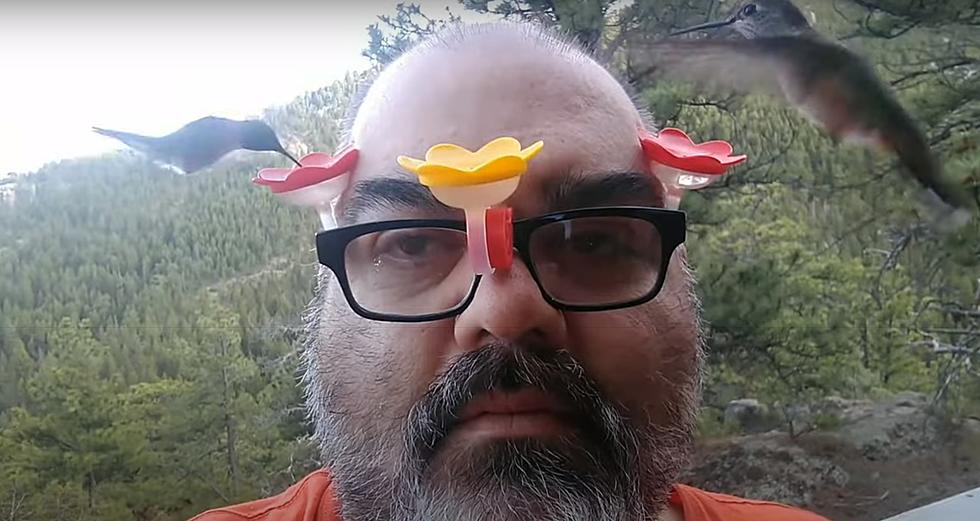
(TMU) – Late spring is the time when bird enthusiasts, and hummingbird lovers in particular, prepare to welcome these amazing little feathered creatures by polishing their special, brightly colored hummingbird feeders.
They are considered one of the smallest, beautiful and remarkable birds found in nature. Native to the Americas, most of the species measure between 2.95-5.11 inches (7.5–13cm) in length – the bee hummingbird, weighing just 0.07 ounce (2.0g) and 1.98 inches (5cm) in length being the smallest existing bird species.
Hummingbirds flap their wings so fast they create the humming sound they are named for and are the only birds that can fly backwards. Although found in Canada and across North America, they migrate to warmer climates to avoid the cold winters, they are found all year in much of the Caribbean and South America and in some of the warmer southern and coastal regions in the US and Mexico.
The North and South America is home to around 330 species of hummingbirds and while these birds have no sense of smell, they do have excellent color vision.
The Ruby-throated Hummingbird for instance, prefer tubular orange or red flowers. To attract them, simply plant red and orange flowers in the garden and/or use feeders with include those colors.
Hummingbirds drink the nectar by moving their forked tongue, which is as long as its beak, in and out of the flower or feeder about 13 times per second and can consume up to double their body weight in a day. And with all the energy used by those fast beating and humming wings, they don’t have to worry about gaining weight either.
Hummingbird enthusiasts sometimes get very creative to attract these birds to their gardens by providing the sweet nectar and intricate, colorful feeders. Quite a few get very creative with their feeder designs, especially when wanting to experience the birds up close and very personal.
A man from Lyons, Colorado for example, attached plastic feeders to his spectacles for a real up-close hummingbird experience.
His design was successful as the birds didn’t seem to mind being so close to a human and happily sipped the sugar water on offer while their rapidly flapping wings hummed around his face.
Spencer Staley, a ‘bird nut’, turned himself into hummingbird feeder a couple of years ago.
Staley converted a safety helmet by adding seven feeders, attached at the tips of thin metal rods. With his innovative human feeding station Staley was able to feed hundreds of birds in a short period of time.
A Costa Rican enthusiast also created a similar hat feeder, albeit on a smaller scale, with three feeders attached to a hat with wire, providing him with a very close view of the birds sipping the nectar.

Flickr
When there’s nectar to be had, hummingbirds don’t seem to mind getting close to humans, even close enough to be fed by hand, but be prepared to be patient should you want to give this method a try.
Animals
Watch the Magical Moment a Pod of Dolphins Glide Through Electric Blue Bioluminescent Waves

(TMU) — Spectacular video footage has been captured showing dolphins literally glowing in neon blue as they swim off the coast of Southern California.
The brilliant scene was captured on Wednesday just as night fell on Newport Beach in Orange County.
The footage was taken by photographer Patrick Coyne of the website Orange County Outdoors, who recently garnered international headlines after taking photos of crashing blue bioluminescent waves in the same coastal waters last week.
Orange County Register reports that Coyne and his fried Ryan Lawler, the owner of Newport Coastal Adventure, were out at sea in an inflatable boat hoping to capture video of creatures illuminated by the bioluminescent water, a natural phenomenon that has allowed Coyne and his colleagues to garner worldwide attention and once-in-a-lifetime shots every photographer dreams of.
The two were just about to call it quits when they suddenly noticed two dolphins near them, who appeared out of the pitch black ocean to swim alongside their small boat. The contrast of the deep, dark ocean water against their illuminated, slender bodies was something they couldn’t believe—and it lasted for about 15 minutes.
Lawler explained:
“They were bow riding, they were super into the boat. About five minutes in, two more came and we had a little pod of four dolphins … It was amazing.”
Coyne was simply blown away by the moment. He said:
“I was like, this can’t be happening.
“This is so magical. After the two dolphins were playing with us, a few more joined in.”
Glowing Dolphins After Sunset!
The biolumenesnce off Newport Beach has been out of this world! Last night Capt. Ryan took the Zodiac out to look for dolphins, and together with friend Patrick Coyne filmed this amazing interaction with a pod of dolphins as they lit up the night.
Posted by Newport Coastal Adventure on Thursday, April 23, 2020
The rare spectacle of glowing blue water caused by algal blooms has been present off some beaches along the Pacific Coast in the past week, most notably in Newport Beach and Acapulco.
The natural phenomenon is known as bioluminescence, and is caused by an increase in the dinoflagellate population. The dinoflagellates—which are tiny, swimming plants—include Lingulodinium polyedra, which is responsible for the glowing waves. Dinoflagellates contain enzymes and proteins that create small light flashes.
During the day, the algal bloom appears as a deep red, rusty tide due to the heavy concentration of small photosynthetic organisms floating up to the surface. When the sun goes down, however, movements such as crashing waves—or in this case, swimming dolphins—make the tiny organisms display light.
Describing the bioluminescence he witnessed last week, Coyne said:
“As soon as the set crashes, it’s a burst of blue light. It’s not always the perfect burst of blue light, you want it to be dark.
“Once it hits, it’s a burst of blue light and you get that color. And it really does look like what you see in pictures and videos.”
Coyne had been dreaming of capturing such night-time footage of dolphins ever since he saw the Netflix film, “Night on Earth,” which used moonlight-sensitive, high-tech low-light cameras and heat-tracking technology to capture nocturnal scenes of marine life.
“It’s not something you can just plan. It was showing up in little sections, we would drive the boat a bit, it would be bright and then it would go away.
“You can’t really find it, it’s pitch black. We could see it when it would start glowing, there’s no way for us to predict it.”
Coyne admits that the moment was so “magical” that he couldn’t help but shed a tear.
“Hands down the most incredible experience of my life.
“I’ve been really lucky, this truly tops everything.”
“We’re pretty proud of [the dolphin footage.]
“I don’t know how many people will ever see that in their life. I didn’t think I’d ever see this in my life, to be honest. It was truly one of the most magical nights of my life.”
-

 Entertainment3 days ago
Entertainment3 days agoJames Franco Explained How Life Is Now Different After Being ‘Cast Out’ of Hollywood
-

 Awareness3 days ago
Awareness3 days agoBleeding Eye’ Virus Sparks Travel Warning and Worldwide Concern – What Is the Incurable Disease?
-

 Ancient History6 days ago
Ancient History6 days agoNASA Finds Underground ‘City’ Hidden 100 Foot Below Icy Surface
-

 News6 days ago
News6 days agoCalifornian Man Who Spends His Time Searching for Abandoned Cars on Google Maps Has Found Some Unbelievable Things in America






